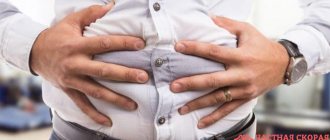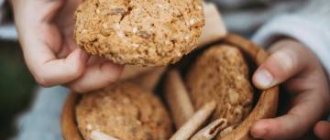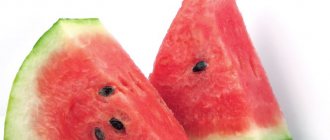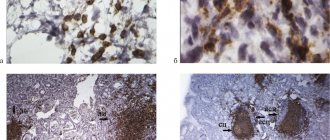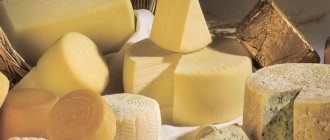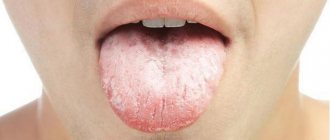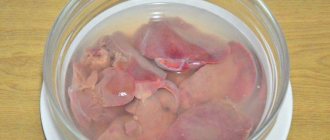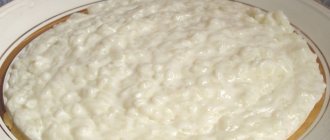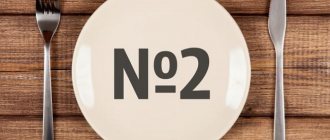NURSING CARE FOR GASTRITIS
NURSING CARE FOR GASTRITIS
Gastritis is an inflammation of the gastric mucosa with impaired motor and secretory functions.
Gastritis can be acute or chronic.
ACUTE GASTRITIS (AG)
Etiology of OH
1. Exogenous factors: chemical (alkalies, acids), mechanical, thermal effects, food poisoning, drug exposure, nutritional factors. 2. Endogenous factors: typhoid fever, dysentery, allergies, diseases of the gastrointestinal tract, kidneys, bile reflux, metabolic disorders.
Clinical picture
Acute onset, pain in the epigastric region, belching, nausea, vomiting, bloating, diarrhea. Body temperature may rise. The duration of the disease is 4 – 6 days.
Treatment
Hunger for 1-2 days, then Table No. 0, then No. 1. After 8-10 days they switch to normal nutrition. In case of food poisoning - gastric lavage, sorbents orally. For pain - antispasmodics, for dyspepsia - enzymes, fluid administration. For allergies, administration of antihistamines. If gastritis is infectious, antibiotics are prescribed.
CHRONIC GASTRITIS (CG)
Etiology of CG
1. Infection of the gastric mucosa with Helicobacter pylori. 2. Formation of autoantibodies to the parietal cells of the stomach. 3. The damaging effect of duodenal contents on the gastric mucosa when the contents of the duodenum are thrown into the stomach.
Risk factors
Exogenous
1. Eating disorders (disturbance in the rhythm of eating, overeating, insufficient chewing of food, abuse of rough, spicy, hot foods, malnutrition). 2. Smoking and alcohol. 3. Occupational hazards (ingestion of vapors of alkalis and acids). 4. Long-term use of certain medications (salicylates, prednisolone, digitalis preparations).
Endogenous
1. Chronic infections (oral cavity and nasopharynx, respiratory diseases and tuberculosis, chronic cholecystitis, etc.). 2. Endocrine diseases (Addison's disease, hypothyroidism, diffuse toxic goiter, Itsenko-Cushing's disease, diabetes mellitus). 3. Metabolic disorders (obesity, iron deficiency, gout). 4. Diseases leading to tissue hypoxia (heart and pulmonary failure). 5. Metabolic disorders (uremia).
Classification
1. Autoimmune - fundic gastritis (CG type A). 2. Associated with HP - antral gastritis (CG type B). 3. Chemically caused, including reflux gastritis (CG type C).
Clinical picture
The clinical picture depends on the type of gastritis.
| Criteria | Forms of chronic gastritis | |
| Type "A" (autoimmune) | Type "B" (associated with HP) | |
| Age | Mostly elderly. | Mostly young. |
| Complaints during exacerbation | Heaviness in the epigastrium, feeling of fullness in the stomach, nausea, rotten belching, unpleasant taste in the mouth, drooling, loss of appetite, diarrhea, general weakness. | Pain in the epigastrium, often hungry, heartburn, sour belching, nausea, vomiting, constipation. |
| Objectively | The tongue is coated. The abdomen is soft, painful in the epigastrium. | |
| Gastric acidity | Most often reduced (hypocidal or anacid gastritis). | Often elevated (hyperacid gastritis). |
| Complications | Stomach cancer | Stomach ulcer |
Diagnosis of hCG
1. Fractional gastric intubation, acidometry. 2. X-ray of the stomach. 3. FGS with biopsy.
4. Examination for HP.
Treatment
Carry out depending on the acidity of gastric juice and association with HP.
Treatment of patients with hCG with increased secretion
1. Diet therapy. Table No. 1. 2. Correction of gastric secretion disorders - prescribing antacid, adsorbent and enveloping drugs. The most preferred are non-absorbable antacids (Almagel, Phosphalugel, Maalox). 3. Correction of disorders of the motor function of the stomach: - for pain, antispasmodics (papaverine), anticholinergics (atropine, platyphylline, metacin, gastrocepin) are prescribed; - when the motor function of the stomach is weakened, concomitant duodenogastric and gastroesophageal reflux is prescribed cerucal, motilium.
Treatment of patients with hCG with decreased secretion
1. Diet therapy. Table No. 2. 2. Stimulators of gastric secretory function: pentagastrin, proserin. 3. Replacement therapy - gastric juice, acidin-pepsin during meals. 4. Enzyme preparations: festal, digestal, panzinorm, pancreatin. 5. Stimulation of reparative and regenerative processes of the mucous membrane: plantaglucide, plantain juice. 6. Herbal medicine: plantain, wormwood, thyme, fennel, oregano, mint, St. John's wort, yarrow, calendula.
Treatment of chronic gastritis associated with HP
A three-component or four-component treatment regimen is used, as for peptic ulcer disease.
Patient care
| № | Action plan | Motivation |
| 1. | Ensure compliance with a gentle regimen during exacerbation of the disease. | For the effectiveness of treatment. |
| 2. | Ensure adherence to a gentle diet (table No. 1 for hyperacid gastritis and table No. 2 for hypocidal and anacid gastritis). | For the effectiveness of treatment. |
| 3. | Conduct dynamic monitoring of the patient (t, vomiting, stool, PS, blood pressure). | To diagnose complications and monitor treatment. |
| 4. | Follow doctor's orders. | For the effectiveness of treatment. |
| 5. | Prepare the patient for examinations. | To diagnose the disease and its complications. |
| 6. | Provide assistance with vomiting. | For the prevention of aspiration of vomit and infectious safety. |
| 7. | Conduct conversations with the patient and his relatives about the need to follow a diet, regimen, quit smoking and alcohol, and take medications. | For the effectiveness of treatment. |
Prevention of gastritis
1. Proper nutrition.
2. Treatment of gastrointestinal diseases.
3. Avoid smoking and alcohol.
NURSING CARE FOR GASTRITIS
Gastritis is an inflammation of the gastric mucosa with impaired motor and secretory functions.
Gastritis can be acute or chronic.
ACUTE GASTRITIS (AG)
Etiology of OH
1. Exogenous factors: chemical (alkalies, acids), mechanical, thermal effects, food poisoning, drug exposure, nutritional factors. 2. Endogenous factors: typhoid fever, dysentery, allergies, diseases of the gastrointestinal tract, kidneys, bile reflux, metabolic disorders.
Clinical picture
Acute onset, pain in the epigastric region, belching, nausea, vomiting, bloating, diarrhea. Body temperature may rise. The duration of the disease is 4 – 6 days.
Treatment
Hunger for 1-2 days, then Table No. 0, then No. 1. After 8-10 days they switch to normal nutrition. In case of food poisoning - gastric lavage, sorbents orally. For pain - antispasmodics, for dyspepsia - enzymes, fluid administration. For allergies, administration of antihistamines. If gastritis is infectious, antibiotics are prescribed.
CHRONIC GASTRITIS (CG)
Etiology of CG
1. Infection of the gastric mucosa with Helicobacter pylori. 2. Formation of autoantibodies to the parietal cells of the stomach. 3. The damaging effect of duodenal contents on the gastric mucosa when the contents of the duodenum are thrown into the stomach.
Risk factors
Exogenous
1. Eating disorders (disturbance in the rhythm of eating, overeating, insufficient chewing of food, abuse of rough, spicy, hot foods, malnutrition). 2. Smoking and alcohol. 3. Occupational hazards (ingestion of vapors of alkalis and acids). 4. Long-term use of certain medications (salicylates, prednisolone, digitalis preparations).
Endogenous
1. Chronic infections (oral cavity and nasopharynx, respiratory diseases and tuberculosis, chronic cholecystitis, etc.). 2. Endocrine diseases (Addison's disease, hypothyroidism, diffuse toxic goiter, Itsenko-Cushing's disease, diabetes mellitus). 3. Metabolic disorders (obesity, iron deficiency, gout). 4. Diseases leading to tissue hypoxia (heart and pulmonary failure). 5. Metabolic disorders (uremia).
Classification
1. Autoimmune - fundic gastritis (CG type A). 2. Associated with HP - antral gastritis (CG type B). 3. Chemically caused, including reflux gastritis (CG type C).
Clinical picture
The clinical picture depends on the type of gastritis.
| Criteria | Forms of chronic gastritis | |
| Type "A" (autoimmune) | Type "B" (associated with HP) | |
| Age | Mostly elderly. | Mostly young. |
| Complaints during exacerbation | Heaviness in the epigastrium, feeling of fullness in the stomach, nausea, rotten belching, unpleasant taste in the mouth, drooling, loss of appetite, diarrhea, general weakness. | Pain in the epigastrium, often hungry, heartburn, sour belching, nausea, vomiting, constipation. |
| Objectively | The tongue is coated. The abdomen is soft, painful in the epigastrium. | |
| Gastric acidity | Most often reduced (hypocidal or anacid gastritis). | Often elevated (hyperacid gastritis). |
| Complications | Stomach cancer | Stomach ulcer |
Diagnosis of hCG
1. Fractional gastric intubation, acidometry. 2. X-ray of the stomach. 3. FGS with biopsy.
4. Examination for HP.
Treatment
Carry out depending on the acidity of gastric juice and association with HP.
Treatment of patients with hCG with increased secretion
1. Diet therapy. Table No. 1. 2. Correction of gastric secretion disorders - prescribing antacid, adsorbent and enveloping drugs. The most preferred are non-absorbable antacids (Almagel, Phosphalugel, Maalox). 3. Correction of disorders of the motor function of the stomach: - for pain, antispasmodics (papaverine), anticholinergics (atropine, platyphylline, metacin, gastrocepin) are prescribed; - when the motor function of the stomach is weakened, concomitant duodenogastric and gastroesophageal reflux is prescribed cerucal, motilium.
Treatment of patients with hCG with decreased secretion
1. Diet therapy. Table No. 2. 2. Stimulators of gastric secretory function: pentagastrin, proserin. 3. Replacement therapy - gastric juice, acidin-pepsin during meals. 4. Enzyme preparations: festal, digestal, panzinorm, pancreatin. 5. Stimulation of reparative and regenerative processes of the mucous membrane: plantaglucide, plantain juice. 6. Herbal medicine: plantain, wormwood, thyme, fennel, oregano, mint, St. John's wort, yarrow, calendula.
Treatment of chronic gastritis associated with HP
A three-component or four-component treatment regimen is used, as for peptic ulcer disease.
Patient care
| № | Action plan | Motivation |
| 1. | Ensure compliance with a gentle regimen during exacerbation of the disease. | For the effectiveness of treatment. |
| 2. | Ensure adherence to a gentle diet (table No. 1 for hyperacid gastritis and table No. 2 for hypocidal and anacid gastritis). | For the effectiveness of treatment. |
| 3. | Conduct dynamic monitoring of the patient (t, vomiting, stool, PS, blood pressure). | To diagnose complications and monitor treatment. |
| 4. | Follow doctor's orders. | For the effectiveness of treatment. |
| 5. | Prepare the patient for examinations. | To diagnose the disease and its complications. |
| 6. | Provide assistance with vomiting. | For the prevention of aspiration of vomit and infectious safety. |
| 7. | Conduct conversations with the patient and his relatives about the need to follow a diet, regimen, quit smoking and alcohol, and take medications. | For the effectiveness of treatment. |
Prevention of gastritis
1. Proper nutrition.
2. Treatment of gastrointestinal diseases.
3. Avoid smoking and alcohol.
Nursing process for chronic gastritis, gastroduodenitis.
Possible patient problems:
- Abdominal pain of varying intensity
- Dyspeptic disorders
- Eating disorder
- Sleep disturbance
- Violation of physiological functions (diarrhea, flatulence, constipation)
- Decreased resistance to mental and physical stress
- Anxiety, anxiety associated with insufficient information about the disease, with an unfamiliar environment during hospitalization.
- Fear of examination.
- The child’s inability to independently cope with difficulties arising as a result of the disease.
Possible problems for parents:
- Disadaptation and change in the stereotype of family life in connection with a child’s illness.
- Lack of knowledge about the disease and care.
- The need to change family meal traditions and organize dietary meals at home.
- Inadequate assessment of the child's condition.
- Changes in family relationships.
Nursing interventions:
1. Inform parents and the child, if age permits, about the causes and risk factors for the development of the disease, clinical manifestations, treatment principles and possible complications.
2. In case of exacerbation of the disease, facilitate the hospitalization of the child in the gastroenterology department of the hospital.
3. Create an atmosphere of psychological comfort and maintain positive emotions in the child during his stay in the hospital.
4. Involve the child in the planning and implementation of nursing care, encourage him to self-care during personal hygiene.
5. Monitor vital functions (respiratory rate, heart rate, blood pressure, duration of pain, nature of vomiting, physiological functions, etc.).
6. Maintain silence and protective behavior when the child is experiencing severe pain, and correctly assess pain.
7. Teach parents to help with pain at home using psychological techniques and medications (soluble and non-absorbable antacids). Warn parents that prolonged use and large doses of antacid medications can cause a complication - milk-alkali syndrome.
8. Evaluate the effectiveness of the therapy in a timely manner and inform the doctor about undesirable effects. Follow the rules for using medications that irritate the gastric mucosa.
9. Teach parents to assist with vomiting.
10. Prepare the child in advance with the help of therapeutic games for manipulations and diagnostic examination methods, while patiently explaining incomprehensible words and terms.
11. Provide the child with therapeutic nutrition, familiarize the child and parents with the features of diet No. 1a, 1b, 1.
12. Teach parents the correct selection of herbs for herbal medicine and the preparation of decoctions.
13. Recommend that parents, during an exacerbation of the disease, provide the child with a rational daily routine with prolonged sleep; when awake, diversify leisure time with calm board games, reading interesting books, listening to music and other favorite activities.
14. Include exercise therapy classes in your daily routine. At the beginning of the disease, 12-15 minutes at a slow pace, using simple exercises for small and medium muscle groups, with a small number of repetitions. Then include exercises for large muscles, but exclude exercises for the abdominal muscles. When the condition improves and the child is transferred to the general regime, increase the duration of classes to 20 minutes, introduce breathing, general developmental exercises for all muscle groups, from various starting positions, include exercises for the abdominal muscles followed by relaxation. Combine exercise therapy with calm games to restore the child’s normal adaptation to physical activity.
15. Train parents to correctly assess the child’s condition, make changes to the care plan depending on his physical and mental condition, and take care of maintaining a positive emotional tone.
16. Advise parents to change negative family traditions regarding nutrition (do not overeat, give up fatty, salty, spicy foods), follow the basic principles of therapeutic nutrition.
17. Involve all family members in maintaining a healthy lifestyle, provide the child with a rational daily routine and adequate physical activity.
18. Convince parents to continue dynamic monitoring of the child by a pediatrician and gastroenterologist after discharge from the hospital in order to monitor the condition, timely prescribe and carry out anti-relapse treatment.
Biliary dyskinesia (BD) is a disease characterized by impaired tone and motility of the gallbladder and ducts, leading to disruption of the outflow of bile from the liver into the duodenum. Among all chronic diseases of the gastrointestinal tract in children, GIPV accounts for 80%. ADHD mainly occurs in preschool and primary school age, and is twice as common in girls.
Causes and risk factors for developing the disease:
· Hereditary predisposition
· Long-term disturbance of the rhythm of nutrition (long intervals between meals).
· Early introduction of fatty and spicy foods into the diet.
· Binge eating.
· Malformations of the biliary system.
· OCI (especially salmonellosis, dysentery, viral hepatitis), parasitic diseases.
· Food allergies.
· Chronic foci of infection.
· Nervous strain, stressful situations.
· Hypokinesia.
· Diseases of the stomach and duodenum.
Mechanism of the pathological process:
Violations of the secretion of digestive hormones cause disruption of the regulation of bile excretion function. Neuroses, impaired tone of the nervous autonomic system, and impaired neurohumoral regulation cause a disorder of coordination and muscle tone of the gallbladder and ducts. Stagnation of bile helps to reduce the bactericidal properties of the intestines, which leads to the development of dysbiosis. Violation of the outflow of bile with a subsequent change in its biochemical composition and colloidal properties contributes to the precipitation of the constituent parts of bile and creates conditions for the development of cholelithiasis.
Clinical picture.
There are two main forms of dyskinesia, which determine the clinical picture of the disease and treatment tactics: hypotonic and hypertensive dyskinesia.
The main clinical manifestations of JVP.
| Signs | Hypotonic | Hypertensive |
| Characteristics of violations | The tone and motor activity of the gallbladder and ducts are reduced. | The tone and motor activity of the gallbladder and ducts are increased. |
| Pain in the right hypochondrium or near the navel | Constant, aching, dull, feeling of fullness. | Paroxysmal, short-term, stabbing or cutting in nature. |
| Other symptoms | General weakness, fatigue, headaches, aversion to fatty foods, belching, nausea, constipation. | Nausea, bitterness in the mouth, belching, loss of appetite, flatulence, upset stool (laxation). |
| Autonomic symptoms | Increased fatigue, irritability, tearfulness, sweating, headache. | Increased fatigue, irritability, tearfulness, sweating, headache. |
| Palpation data | Pain in the area of the gallbladder, large atonic gallbladder. | Pain in the gallbladder area. |
Complications:
· ZhKB
· Intestinal dysbiosis
Diagnostic methods:
| Type of examination | Hypotonic | Hypertensive |
| Cholecystography | An increase in the size of the gallbladder with normal or delayed emptying. | Reduction in the size of the gallbladder with accelerated emptying. |
| Ultrasound | An increase in the size of the gallbladder. | Reduction in the size of the gallbladder, cholestasis. |
| Duodenal sounding | An increase in portion “B” with a normal outflow rate or a decrease in portion “B” when the outflow rate decreases. | Reducing portion “B” with increased outflow rate. |
| Biochemical study of bile | Increased concentrations of bilirubin, cholesterol, bile acids and cholic acid. | Reduced levels of bilirubin, cholesterol, bile acids, cholic acid and lipoprotein complex. |
Forecast.
With timely correction of diet and lifestyle, the prognosis is favorable.
Basic principles of treatment for ADHD:
Treatment tactics depend on the form of dyskinesia, therefore, at the first stage, a complete examination and treatment of the child in a hospital is desirable.
1. Bed rest for severe pain, because in a horizontal position, microcirculation of the digestive organs and the outflow of bile are improved.
2. Diet therapy: diet No. 5 (limitation of mechanical and chemical irritants, refractory fats, enrichment with choleretic products containing plant fiber). Meals are divided into fractions from 4 to 6 times a day (to prevent prolonged stagnation of bile in the gallbladder), food is taken warm. In case of hypertonic form, limit the amount of fat in the diet; in case of hypotonic form, increase the amount of protein, introduce juices with pulp, fruits, and berries. Increase the volume of fluid administered in the form of mineral water, diluted juices, compotes, rosehip decoction.
3. Medicines:
· In the hypertensive form: antispasmodics (no-spa, papaverine), choleretic (allochol, cholenzym, holosas, flamin), sedatives (bromides, valerian, motherwort).
· In the hypotonic form: choleretic (sorbitol, xylitol, magnesium sulfate), tonic (Eleutherococcus, ginseng).
4. Herbal medicine. For hypertensive dyskinesia, the collection includes St. John's wort, chamomile, and snakeweed; for hypotonic – peppermint, Chinese lemongrass, immortelle, yarrow, calamus, trifoli.
5. Treatment courses with mineral water. For hypertonic dyskinesia, it is recommended to drink low-mineralization water (Essentuki No. 4, 20, Narzan) warm in small portions; for hypotonic dyskinesia, high-mineralization water (Essentuki No. 17, Arzni) at room temperature, with gases.
6. Physiotherapy: paraffin baths, electrophoresis, etc.
7. Exercise therapy.
8. Carrying out tubages according to Demyanov once every 7-10 days with sulfate waters.
9. Sanatorium-resort treatment at climatic and balneological resorts (Essentuki, Zheleznovodsk, Borjomi, Pyatigorsk, Nalchik, Izhevsk) without exacerbation.
Prevention.
· Follow a diet and do not overeat.
· Do not abuse fatty and spicy foods.
· Avoid physical strain and stressful situations.
· Observe anti-epidemic measures when there is a threat of intestinal infections.
· Promptly sanitize foci of chronic infection.
· To live an active lifestyle.
Dispensary observation is carried out by a local pediatrician and gastroenterologist.
After discharge from the hospital, the pediatrician examines the child monthly during the first six months, then quarterly for 2-3 years, and then 2 times a year. The child is examined by an otolaryngologist and a dentist 2 times a year, and foci of chronic infection are promptly sanitized. Feces for coprogram, worm eggs are carried out before each examination by a doctor, other examinations are carried out according to indications. In spring and autumn, anti-relapse treatment is carried out for 1-2 weeks (herbal medicine, vitamins, sedatives, mineral waters, physiotherapy). Physical education classes in a special group or exercise therapy.
Features of nursing activities for gastritis - Coursework
Main part (excerpt)
1 Gastritis: etiology, clinical picture, diagnosis, treatment
1.1 Etiology, pathogenesis and clinical picture of gastritis
Gastritis is a collective concept used to designate inflammatory and dystrophic changes in the gastric mucosa of different origins and course. Depending on the intensity and duration of action of the damaging factors, the pathological process can be acute, occurring predominantly with inflammatory changes, or chronic, accompanied by structural changes and progressive atrophy of the mucous membrane. Accordingly, there are two main forms: acute and chronic gastritis. In almost many countries of the world, chronic gastritis is recorded in 80-90% of the population, while the most dangerous form of gastritis, related to the so-called “precancerous conditions” - atrophic gastritis is found in patients under 30 years of age in 5% of cases, in patients aged from 31 to 50 years old - in 30% of cases, in patients over 50 years old - in 50-70% of cases [1].
Chronic gastritis is a serious diagnosis that can be made to any patient, regardless of age and individual characteristics of the body. The disease develops against the background of frequent problems with the digestive system, due to poor nutrition and infection with dangerous bacteria.
The etiology and pathogenesis of chronic gastritis is widely studied by modern doctors. The thing is that the development of such a problem is influenced by a lot of factors - from living conditions to chronic inflammation of the oral cavity and lungs.
Since gastritis is considered one of the most common diseases, it can be difficult for doctors to calculate all the factors that influence the progression of the problem. The etiology of illnesses is precisely that branch of science that studies the causes and conditions for the development of certain problems in the functioning of the body. When studying the pathogenesis of gastritis, the mechanisms that influence the course of the disease are taken into account. Doctors usually identify external and internal factors that can influence the development of complications.
The main external etiological factors contributing to the occurrence of CG are:
• the most significant is infection of the stomach by Helicobacter pylori and, to a lesser extent, other bacteria or fungi; eating disorders; bad habits: alcoholism and smoking, long-term use of medications that irritate the gastric mucosa; exposure to radiation and chemicals on the mucous membrane; parasitic infestations; chronic stress.
Internal factors contributing to the occurrence of hCG are: genetic predisposition; duodenogastric reflux; autoimmune processes that damage stomach cells; endogenous intoxications; hypoxemia; chronic infectious diseases; metabolic disorders; endocrine dysfunctions; lack of vitamins; reflex effects on the stomach from other affected organs.
According to etiology, chronic gastritis is divided into three main forms: type A, B, C and mixed forms. Chronic gastritis is clinically manifested by both local and general disorders, which, as a rule, appear during periods of exacerbation:
Local disorders are characterized by symptoms of dyspepsia (heaviness and a feeling of pressure, fullness in the epigastric region, appearing or intensifying during meals or shortly after eating, belching, regurgitation, nausea, unpleasant taste in the mouth, burning in the epigastrium, often heartburn, which indicates a violation of evacuation from the stomach and reflux of gastric contents into the esophagus).
General disorders can be manifested by the following syndromes:
• weakness, irritability, disorders of the cardiovascular system - cardialgia, arrhythmia, arterial instability;
• patients with atrophic chronic gastritis may develop a symptom complex similar to dumping syndrome (sudden weakness, pallor, sweating, drowsiness, occurring soon after eating), sometimes combined with intestinal disorders, with an imperative urge to stool;
• in patients with chronic gastritis of the body of the stomach and the development of B12-deficiency anemia, weakness, increased fatigue, drowsiness appear, there is a decrease in vitality and loss of interest in life; There is pain and burning in the mouth and tongue.
• in patients with Helicobacter pylori-associated antral chronic gastritis with high acidity, ulcer-like symptoms may develop, indicating a possible pre-ulcerative condition.


